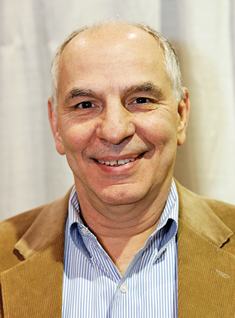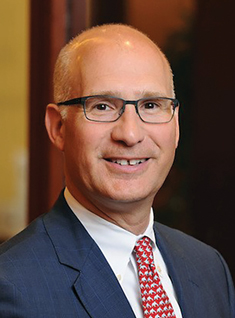When Bob Ferrara ’67 arrived on campus, he fell in love … with MIT. Like the other three alumni who recently earned the Alumni Association’s highest award, the Bronze Beaver, Ferrara has supported MIT with countless hours, endless enthusiasm, and personal and professional connections.




At the Alumni Leadership Conference (ALC) dinner September 26, the four 2015 Bronze Beaver recipients—Ferrara; Jonathan M. Goldstein ’83, ’84, SM ’86; Robert N. Gurnitz ’60, SM ’61, PhD ’66; and Theresa M. Stone, SM ’76—were honored for their decades of devotion.
Goldstein’s adventures for MIT include going to Florida to cover the launch of a space shuttle carrying an astronaut classmate for a class e-mail update. He has served as a class secretary, as a leader of reunion and giving efforts, and on the MITAA and Annual Fund boards. He was instrumental in securing Tom Scholz ’69, SM ’70, of the band Boston for the MIT150 Tech Night at Pops and is now New England regional chair of the Corporation Development Committee.
“The future of our world will be heavily influenced by advances in science and technology, and no institution contributes more to those fields than MIT,” says Goldstein, a senior advisor at TA Associates, a Boston-based venture capital fund. “It is an honor to serve on committees at MIT.”
Robert Gurnitz has served MIT for four decades but has particularly enjoyed volunteering the past 14 years as an alumni mentor for first-year students taking 12.000: Solving Complex Problems, an elective that gives classes an ambitious interdisciplinary “mission” to address a global challenge. He’s traveled to Gloucester for Mission 2007: Saving Our Oceans and to India for Mission 2014: Feeding the World.
Gurnitz, an investment consultant, has led the Club of Southwest Florida near his Marco Island home, served on the Association board, and more. He attends the annual Alumni Leadership Conference on campus each fall. “As president of the MIT Club of SWFL, I am always searching for ways to help improve our club,” he says. “ALC provides a great chance to get firsthand updates on what is going on at MIT.”
Theresa Stone, a Sloan graduate, was involved for decades in several MIT capital campaigns and in the MIT Club of New York; she was also MIT’s executive vice president and treasurer from 2007 to 2011. She served on the MIT Corporation both before and after her EVP role and currently chairs the Humanities Visiting Committee and serves on two others. Stone calls her Sloan experience “transformational” and pivotal to her career in finance and management.
She finds MIT a great place to volunteer: “For someone considering getting involved for the first time, seek out an activity where your passion and experience fit. In my experience, each door opens up vistas that I couldn’t have imagined that only make me more excited about giving more time and energy to MIT.”
Ferrara, like Stone, has served MIT as a staff member. He began his career at MIT as director of IT delivery in 1996, and today he is senior director of strategic planning, communications, and community relations in the Division for Student Life. He has been a longtime leader in the MIT Club of Boston and an active supporter of fraternities, sororities, and independent living groups, and he was a founding member of both the Tech Challenge Games and the Cambridge Science Festival’s Science Trivia Competition as well as creator of the annual Toast to IAP quiz. He also supports the men’s varsity basketball team and helped organize the 50th Smoot anniversary that honored the legendary marking of the Mass. Ave. bridge.
What does Ferrara think is the most rewarding part of volunteering for MIT? “To meet so many wonderful fellow alumni and staff from MIT,” he says. “Just like when you came here you found yourself in the midst of all these incredible people—it was a completely different community than we had ever experienced. And that community is still here.”
Keep Reading
Most Popular
Large language models can do jaw-dropping things. But nobody knows exactly why.
And that's a problem. Figuring it out is one of the biggest scientific puzzles of our time and a crucial step towards controlling more powerful future models.
How scientists traced a mysterious covid case back to six toilets
When wastewater surveillance turns into a hunt for a single infected individual, the ethics get tricky.
The problem with plug-in hybrids? Their drivers.
Plug-in hybrids are often sold as a transition to EVs, but new data from Europe shows we’re still underestimating the emissions they produce.
Stay connected
Get the latest updates from
MIT Technology Review
Discover special offers, top stories, upcoming events, and more.